“A perfect example of interpretive genius from a visionary guitarist”: The 20 greatest guitar cover versions
We asked, you voted, and the results are in. But who made it to number one?
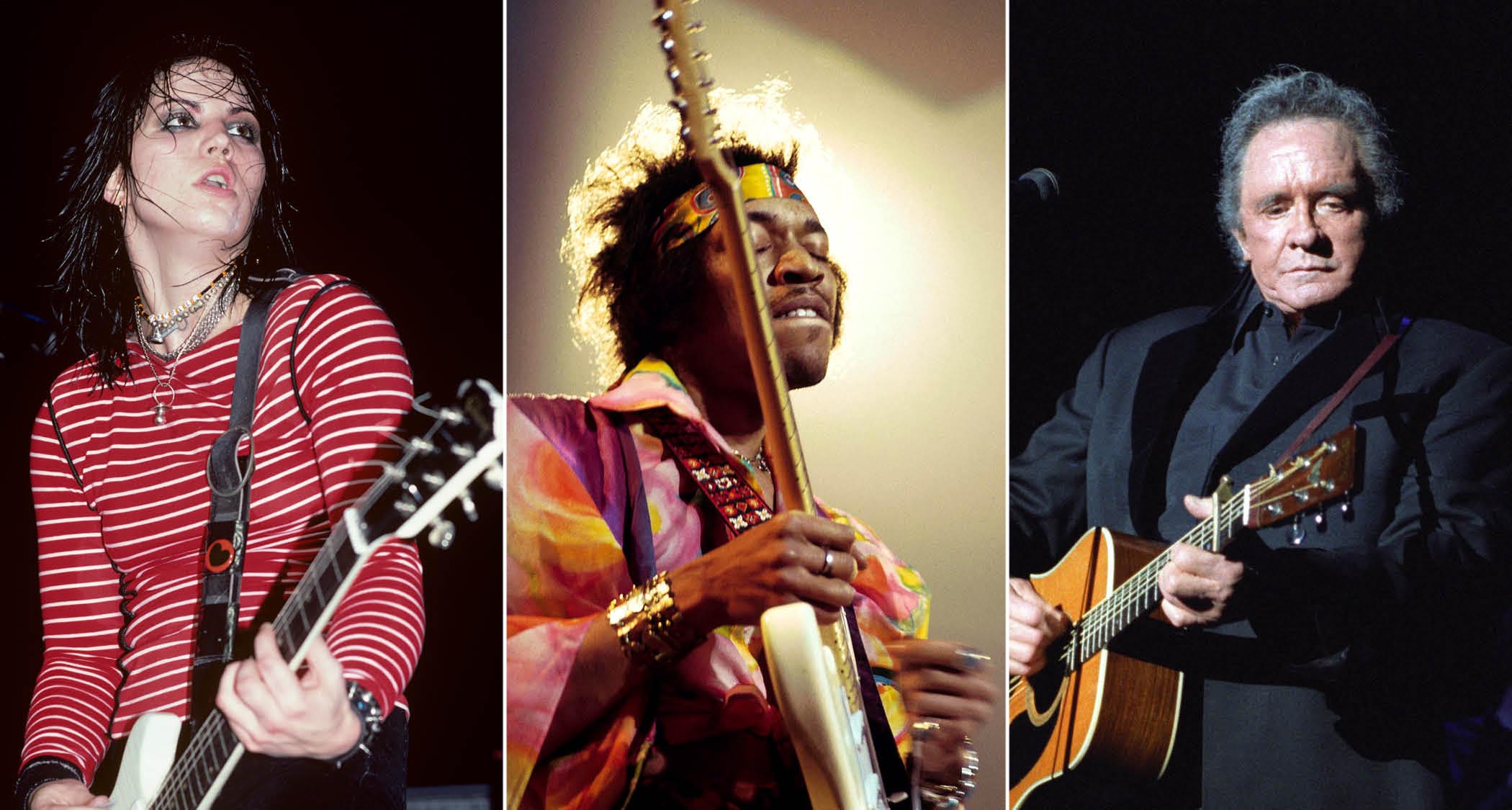
There can’t be one single player who has ever picked up a guitar that doesn’t at least play an occasional cover version. Jamming through other people’s songs is just part of the joy of playing. It’s how we learn our instrument and spend most of our playing time.
Of course, many musical icons have taken the art of the cover version to great heights, in some cases the covers becoming the better known, more loved arrangements.
After polling readers on guitarworld.com, Total Guitar put together a list of the 20 greatest cover versions – as voted for by you.
You’ll find more than a few examples of tracks that put a new stamp on the originals. And, up top, a perfect example of interpretive genius from a visionary guitarist…
20. Joe Bonamass – Sloe Gin
In 1978, Rocky Horror Picture Show star Tim Curry launched a music career. Working with producer Bob Ezrin months before he would be tapped for Pink Floyd’s The Wall, Curry’s debut album included Sloe Gin. “That song initially came to me via [producer] Kevin Shirley who was born in South Africa,” explains Joe Bonamassa. “It was a hit there but nowhere else.”
“I have to give a special shout out to Steve Hunter and Dick Wagner who played on the original version,” Joe acknowledges. “They were basically Bob Ezrin’s ringers. The first time I played it, people applauded like they knew the song. And they didn’t know the song, it just sounded familiar. That was a very cool thing. That song has been with me for 20 years now.
“What you hear on the record and how we play it live are two different things. That song’s got a life of its own. I’m thrilled with that… sometimes we just have to play it!
Get The Pick Newsletter
All the latest guitar news, interviews, lessons, reviews, deals and more, direct to your inbox!
“There’s definitely a sense of build in the solo section. I did my best not to go ‘widdly widdly’ on that one from the get-go. The solo was actually way longer. I think there must have been 10 minutes of B-roll, because we just kept going and Kevin edited it down.
“For the recording, I used my Marshalls and Van Weeldens, which is what I’ve been using on my latest tour, funnily enough. As for the guitar, it would have been an R8 or R9 reissue Les Paul.”
Joe’s magnificent solo came 42nd in our 2020 poll of the greatest guitar solos. While no-one doubts Joe’s technical ability, he plays with incredible restraint on Sloe Gin, building intensity without relying on speed. Instead, he creates excitement by working up the neck with increasingly wide bends and vibrato. – Amit Sharma
19. Led Zeppelin – Travelling Riverside Blues
This is a song that seemed destined to remain a little-known gem. Robert Johnson’s original version was laid down at his last ever recording session on June 20, 1937, but wasn’t released until 13 years after his death. Zeppelin’s cover, too, was released posthumously, appearing in 1990 after Jimmy Page negotiated its release from the BBC archives.
Each verse of the Zeppelin version plays the main riff four times, then goes into a standard 12-bar blues progression. The Johnson original is harder to follow if you’re unfamiliar with early acoustic blues.
Like many solo singer/guitarists of the era, Johnson simply changes the chords as he feels them. His intro can be counted as two 4/4 bars and one 5/4 bar, and his first verse has 13 4/4 bars, with three bars of 2/4 interspersed.
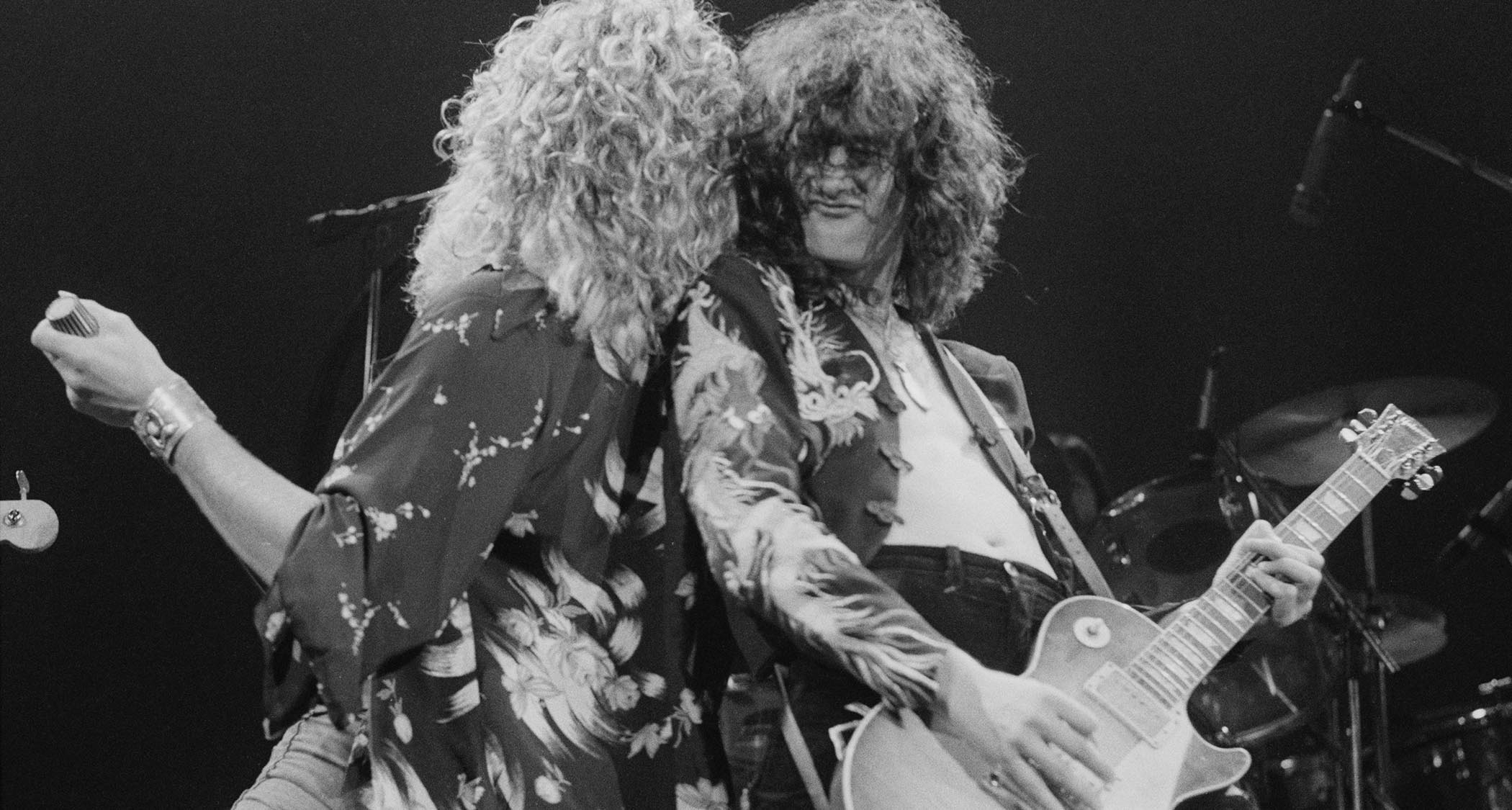
It’s a mystery how Zeppelin decided whether to claim their songs were originals or covers. Travelling Riverside Blues has an original riff and melody, but because it retains Robert Johnson’s title, was credited as a cover version.
Still, this is as thunderous as the highlights from Led Zeppelin II, even though it first aired on BBC radio four months before that album’s release.
It is widely assumed that Jimmy Page played the 1967 Vox Phantom XII he had used since The Yardbirds for the recording of …Riverside Blues. The following day, Zeppelin recorded Thank You and Living Loving Maid at Morgan Studios, and Page has confirmed he used the Phantom XII for those songs.
The amp is still shrouded in mystery (Page says he doesn’t remember), but during this time period he was gigging with Marshall amps, often paired with an Arbiter Power One Hundred or the Vox UL4120 he is thought to have used on Whole Lotta Love. – Jenna Scaramanga
18. Metallica – Am I Evil?
In 1980, when Diamond Head were rising stars of the New Wave Of British Heavy Metal, their epic track Am I Evil? was widely cited as one of the heaviest pieces of its time. Making similar use of the eerie tritone interval featured in Black Sabbath’s defining song Black Sabbath, it’s the kind of music tailor-made to send shivers down the spine and provoke the same sense of dread associated with horror movies.
One of its key attributes in achieving that is its usage of time – with the doomier chords ringing out much slower to the mid-tempo palm-muted sections, highlighting the intensity and drama of each part.
As a band who made no secret of how much they learned from the NWOBHM movement, Metallica released their own version of Am I Evil? as the B-side to Creeping Death in 1984. Their version was faster and heavier, replacing Brian Tatler’s hard-rock guitar tones heard on the original with something more distorted and aggressive, intensified by James Hetfield’s signature snarl.
Kirk Hammett’s solo stays close to Tatler’s, sticking with minor pentatonic ideas in the key of B or E, depending on the chords underneath, as well as wide intervallic runs using either hammer-ons and pull-offs on open strings or two-handed techniques.
These ideas had been popularised by the likes of Eddie Van Halen and Angus Young, who were looking for ways to break out of the pentatonic rock shapes in the late ’70s.
Over the years, Metallica recorded three other Diamond Head classics, all of which were subsequently included on their covers album Garage Inc. in 1998. In fact, Metallica’s early shows regularly included four DH songs. They were, arguably, the best Diamond Head tribute act in the world! – Amit Sharma
17. Aerosmith – Come Together
Creating a film based on The Beatles’ Sgt Pepper’s Lonely Heart’s Club Band probably sounded like a great idea. Some had their doubts about stars Peter Frampton and the Bee Gees, but Aerosmith agreed to play the Future Villain Band chiefly so they could work with producer George Martin.
The well-medicated Aerosmith had a reputation for slow recording, so Martin told them once they were done they could see Jeff Beck at Trax, a New York club. Aerosmith whipped through the recording in two takes and headed to Trax, only to find Martin had hoaxed them: Beck was not playing.
With Come Together, with Steven singing it and me and Brad’s guitar tones, of course it’s gonna sound like Aerosmith. But I think we kept pretty close to the sound that made it the classic that it is
Joe Perry
Aerosmith’s version of the song sticks close to the original instrumentation, although Joe Perry used a Strat, unlike George Harrison’s Les Paul. Joe Perry tells TG: “I always felt like when you cover a song that’s as iconic as a Beatles song, you don’t want to go too far off the path.
“Certain things make it a classic song, such as some of the guitars, the melody or the lyrics. I mean, there are no hard and fast rules here. Like, Jimi [Hendrix] certainly fucking killed Bob Dylan’s All Along the Watchtower! He made it his own, and I think that’s fine, too.
“So with Come Together, with Steven singing it and me and Brad’s guitar tones, of course it’s gonna sound like Aerosmith. But I think we kept pretty close to the sound that made it the classic that it is.
“As a Beatles fan, I didn’t want to drift too far off from that. I wanted to pay my respects to the song, and that’s kind of how I feel about covering songs in general. I feel it would have been wrong to go about it and not recognize the song and what made it popular in the first place.” – Jenna Scaramanga
16. Jeff Beck – Over The Rainbow
Judy Garland’s performances of Over The Rainbow are the benchmark, of course, and it’s appropriate to compare Beck with her, because Jeff was a master of giving guitar melodies a vocal quality. Voices, of course, do not have frets, and Beck used his whammy bar ingeniously to mimic the way vocalists swoop into notes and slide between them.
It can be difficult to tell on recordings when Beck uses a guitar slide, because he could create such similar effects using the Strat tremolo. In a 2023 TG interview, Joe Perry recalled seeing Beck perform a slide version: “That two-and-a-half minutes, the audience was on the edge of their seats.”
The version Beck is best known for, though, was played without a slide. There is video of him performing it as early as 2006, but the definitive recording appeared on 2010’s Emotion & Commotion.
Producer Steve Lipson recalls that the only amp used was a Fender Pro Junior combo, mic’ed as close as possible with an AEA R-84, two inches from the centre of the speaker. The guitar, of course, was a Jeff Beck Stratocaster. Beck didn’t use a pick, plucking the string with his thumb.
Occasionally you can hear the stronger attack of his thumbnail to bring out the natural harmonics. You need the amp very loud to provide the compression that keeps the harmonics at an even volume, since some are naturally much quieter than others. You’ll also need that volume and compression to get enough sustain to play an entire phrase just by manipulating one note with the bar.
Beck’s performance is a masterclass in emotion and control. His volume swells, edging the guitar into distortion at the song’s peaks, are sublime. It’s a performance worthy of comparison with the likes of Ella Fitzgerald and Garland. – Jenna Scaramanga
15. Lenny Kravitz – American Woman
If the original version of American Woman – written and recorded by Canadian rockers The Guess Who – sounds like the product of an improvised jam, that’s because it is.
Guitarist Randy Bachman, who would later go on to lead Bachman-Turner Overdrive, had broken a string on stage and started strumming a riff after replacing it, prompting the band to join in and make it up as they went along. The finished song would end up topping the US chart.
Fast-forward 30 years and American Woman would find a new lease of life through Lenny Kravitz’s rendition on the soundtrack for espionage comedy Austin Powers: The Spy Who Shagged Me.
Lenny’s version would omit the acoustic intro and start with the main riff, performed in a lower tuning with a more overdriven and modernised electric guitar sound, almost sounding closer to Def Leppard hit Pour Some Sugar On Me in feel and delivery.
The riff is performed dry twice, before reverb gets added in to thicken the sound before the vocals come in, and then switched off – an unusual production trick that catches the listener’s ear in more subtle ways.
There’s a new key change introduced for the solo section, moving a semitone down from C to B and then back again, over which Kravitz implements his favourite minor pentatonic licks, presumably on the black Gibson Flying V being played in the official video.
For the outro section, the guitars thin out and adopt more of a funk approach with strummed dead notes in between the chords that land on the stronger beats, swapping the full-bodied attack for something more scratchy and abrasive. – Amit Sharma
14. Eric Clapton – I Shot The Sheriff
Originally appearing on Burnin’, Bob Marley’s 1973 album with the Wailers, I Shot The Sheriff’s is Marley’s iconic protest song aimed at police harassment. Marley and Peter Tosh shared guitar duties; with wah-wah effects and tight, backbeat-style rhythm, Tosh also supplied lead licks, plus piano and organ. Next to Eric Clapton’s more sophisticated cover, the Marley recording sounds organic and earthy.
Clapton maintained Marley’s original key of G minor, but turned the bridge’s Eb chord into the slicker Ebmaj7. George Terry, Clapton’s six-string sideman at the time, probably played rhythm, leaving EC to plant understated minor pentatonic fills that honoured the original.
In fact, Eric was so worried about covering the song that he sought Marley’s approval. This was granted, although Bob later complained that the cover got all the airplay, even in Jamaica. While Marley, Tosh and percussionist Bunny Wailer supplied backing vocals on the original, Eric used his preferred background singer at the time, Yvonne Elliman. And while Marley answered the backing vocals call and response style, Clapton sang the full line.
The EC version hit the top of the Billboard Hot 100, and remains his only chart-topping record. His success with the track also set Marley’s career soaring, the Jamaican star continuing to perform I Shot The Sheriff until the year before his death in 1981. – Neville Marten
13. The Clash – I Fought The Law
In 1978, while The Clash were working on their second album Give ’Em Enough Rope at The Automatt studio in San Francisco, guitarists Joe Strummer and Mick Jones were toying with the owner’s collection of classic jukeboxes when they heard the Bobby Fuller Four version of I Fought The Law. The song was penned by Sonny Curtis, who played guitar for rock ’n’ roll legend Buddy Holly and was a member of his backing band The Crickets.
The Clash’s recording of I Fought The Law initially appeared on the band’s 1979 EP The Cost Of Living and the subsequent American edition of their debut album. It would become one of their best-known songs and a live staple for the members in various projects for years to come.
Although mainly built around basic G and D chords, the track features some impressive interplay between the two guitar players – particularly during the harmonised lead break nearly a minute in. It’s the kind of dual attack that had been popularised by bands like Thin Lizzy in the years prior, sounding more like two guitarists having a conversation at the same time and playing off each other than anything strictly harmonised to a specific interval across the board.
Another key element of the track is the usage of double strikes, whether that be how the rhythm guitar chords are strummed or some of the lead sections, adding to the staccato feel.
Especially in comparison to the clean Strats heard on the infinitely more polite Bobby Fuller Four recording, The Clash’s tones sound remarkably raucous, with humbucker-equipped guitars such as a Gibson Les Paul Standard fed into overdriven amps for a more aggressive and anarchic snarl. – Amit Sharma
12. Joan Jett & The Blackhearts – I Love Rock 'N' Roll
Alan Merrill, the singer for British pop rock band Arrows, explained the inspiration behind their most famous song back in 2016, explaining how the group “needed a fourth single”, and it was producer Mickie Most who told him to “think of a simple three-chord rocker with an anthemic sing-along chorus and a great riff.”
Few would deny he met that brief, even if the song didn’t give Arrows a hit. But by chance, Joan Jett was on tour in England with her band The Runaways in 1976 when she saw Arrows performing I Love Rock ’N’ Roll on their own ITV television show.
She would then record her own version in 1979 with guitarist Steve Jones and drummer Paul Cook from the Sex Pistols, before cutting the definitive version in 1981 with her band The Blackhearts – which topped the US charts for seven weeks and eventually become the song she is best known for.
This version was slightly faster with more reverb compared to the more direct-sounding original, though both feature guitars overdubbed an octave up for the tag at the end of the main riff.
Another interesting difference can be found in the leads halfway in – the Arrows version, played by guitarist Jake Hooker, sits comfortably in an F minor pentatonic framework, while Ricky Byrd’s work on the Joan Jett cover has a much more major pentatonic feel – using relative minor shapes three frets down from F major in the 10th fret position.
He can also be seen bending the headstock of his Les Paul in the video to detune a chord in a similar kind of way to a whammy bar – a move which certainly looks cool but has its dangers given the well-documented weak points of that particular guitar design.
Ultimately, it’s an example of the cover version surpassing the original, thus becoming incredibly lucrative for Messrs Merrill and Hooker. – Amit Sharma
11. Nirvana – The Man Who Sold The World
The title track of David Bowie’s 1970 album passed unremarked on release, only appearing on singles as a B-side and rarely garnering comment from reviewers. Bowie and guitarist Mick Ronson produced Lulu’s 1973 cover version, which made the song famous. Lulu’s version lacked Ronson’s guitar riff, though, replaced by a new saxophone hook.
With customary anti-corporate instincts, Nirvana largely ignored their own hits for their MTV Unplugged session in December 1993. Instead, they pulled out album tracks and deep cut covers. When the album was released in December 1994 following Cobain’s death, it was The Man Who Sold the World that became the de facto single, gaining heavy airplay on MTV and alternative radio stations.
For mourning fans, it became a memorial. It was a testament to Cobain’s ability to strip a song to its core and elements and deliver a moving performance. Like many of Cobain’s own compositions, the song features a deceptively complex chord pattern drawing from the keys of both A major and A minor.
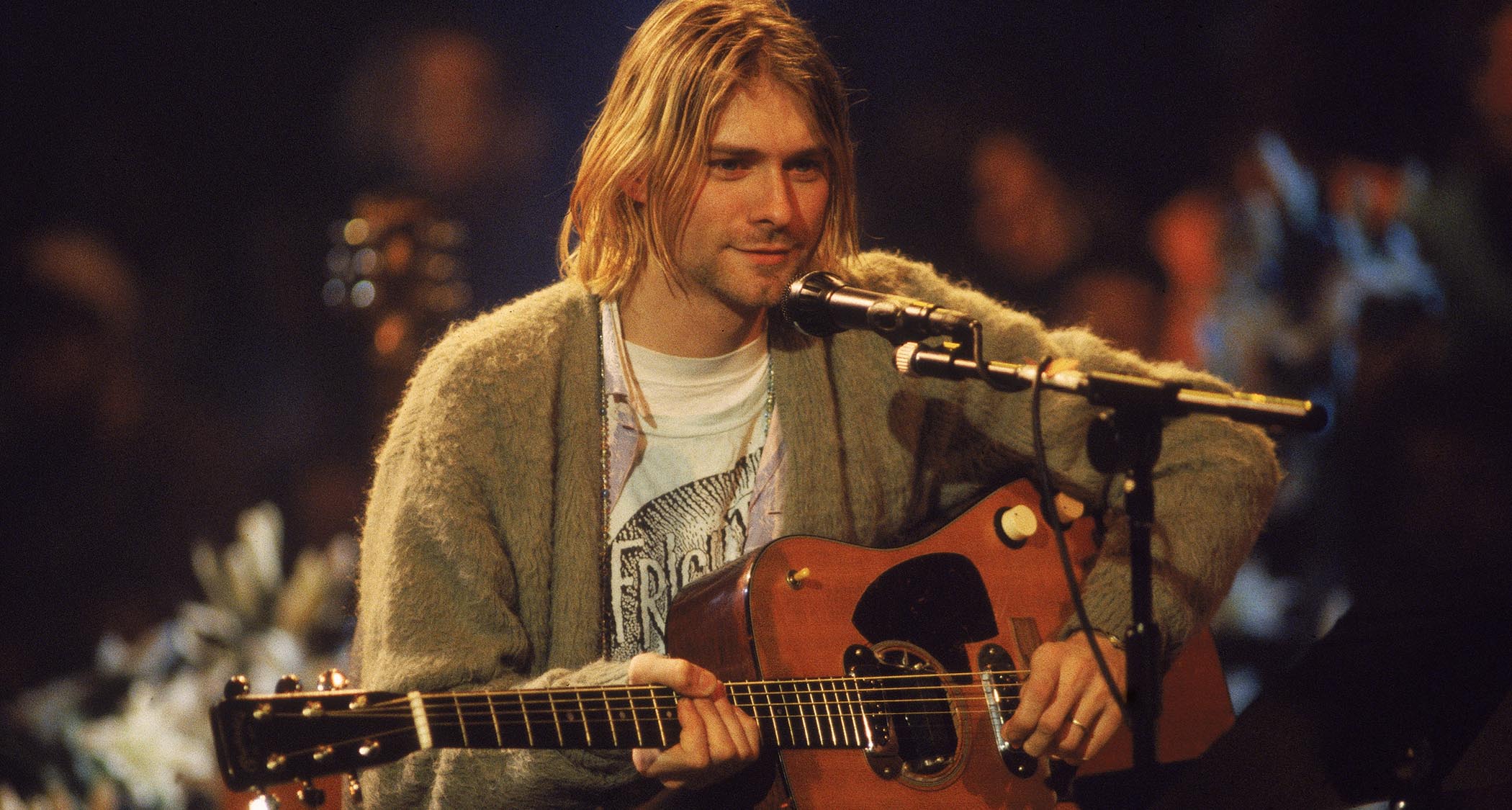
The Martin D-18E Kurt used for the performance became the most expensive guitar ever sold at auction, fetching $6m in summer 2020. Kurt played the right-handed model upside down. Its original DeArmond single coil pickups didn’t sound good with Kurt’s bronze strings, so for Unplugged Kurt used a Bartolini 3AV soundhole pickup. The now very much plugged-in D-18 went through a Boss DS-2 and into a Fender Twin.
While Mick Ronson played the main hook by bending the G string, with heavier acoustic strings Kurt went for a hammer-on and pull-off. The singing sustain Kurt gets on the outro solo is thanks to the DS-2, helped by the hollowbody’s tendency to feed back.
He shrugs off his mistake at 2:47, where he lands on the wrong note when sliding to the 10th fret – with any Nirvana performance, the don’t-give-a-fuck attitude is key. – Jenna Scaramanga
10. Guns N' Roses – Knockin' On Heaven's Door
“I always loved that song from when it came out,” says Slash, meaning he discovered Bob Dylan’s original aged just 8. “At some point Axl and I had a conversation and we both ended up loving the same song. We sort of just threw it together when we were playing in London at the Marquee in 1987.”
It became a GN’R standard, finally getting a studio recording for 1991’s Use Your Illusion II. Slash played the clean parts through a Roland JC-120, with the amp’s built-in chorus. The solos were played on a Gibson Explorer, using the neck pickup with the tone rolled down. – Jenna Scaramanga
9. The Beatles – Twist and Shout
The song was written in 1961 by Bert Berns and Phil Medley, and the monumentally twee first release by the Top Notes was not a hit. The Isley Brothers’ rip-snorting 1962 cover made it a hit, and provided the blueprint for The Beatles’ take.
The Fab Four took it at an even faster pace, and pushed the third chord in the riff ahead of the beat, giving it a real driving energy. They arranged the horn parts for guitar, making the harmonised solo in a classic double-stop workout. It failed to reach #1 in the US, held off by the Beatles’ own Can’t Buy Me Love. – Jenna Scaramanga
8. Cream – Crossroads
Of all the blues covers, Cream’s Crossroads ranks among the best. Robert Johnson recorded two takes of Cross Road Blues in 1936, with one released the following year and the other on a 1961 compilation. Cream’s epic live version stands out for its pounding open-position riff and a speedy turnaround lick that Clapton refers to throughout.
There are two fabulous solos, the first a tasteful 24-bar pentatonic workout that was quick by 1968 standards. But with his second outburst, Eric takes the roof off with a 36-bar break that starts with Chuck Berry-style doublestops and builds to a frenzied climax on a final repeat of Eric’s turnaround lick. The greatest blues solo ever? – Neville Marten
7. Aretha Franklin – Respect
Otis Redding recorded Respect in 1965 with Stax Records house band Booker T. and the M.G.’s, featuring Steve Cropper on guitars and production. Aretha Franklin began covering it almost immediately.
The studio band had never heard Franklin’s live version, but producer Jerry Wexler had Franklin play piano on the track, and guitarists worked out their parts from watching Aretha’s right hand. Redding’s version was fast with a horn line as the main hook.
Franklin’s heavier groove called for a new intro, and guitarists Jimmy Johnson and Chips Moman stepped up with a work of genius. Chips Moman played a 1956 Gibson Super 400 he had bought from Elvis guitarist Scotty Moore. – Jenna Scaramanga
6. Stevie Ray Vaughan – Voodoo Chile (Slight Return)
One sage saying about cover versions goes something like, ‘if you can’t better it, change it completely or leave it well alone’. Witness Hendrix reinventing Dylan’s original, or The Byrds’s electric 12-string guitar take on Bob’s Mr Tambourine Man, and Joe Cocker’s sublime reworking of The Beatles’ With A Little Help From My Friends.
Stevie Ray Vaughan evidently didn’t get the memo, as his take on Hendrix’s slice of Electric Ladyland genius (which made a posthumous #1 on the UK singles chart) is a faithful, if fire-breathing, remake.
At just over eight minutes long, it’s really more like one of Jimi’s live renditions, as on Hendrix In The West, where Hendrix retains the essence of his composition but extends and paraphrases it. Were it not for SRV’s even more overdriven Strat tone it could be Jimi on another day.
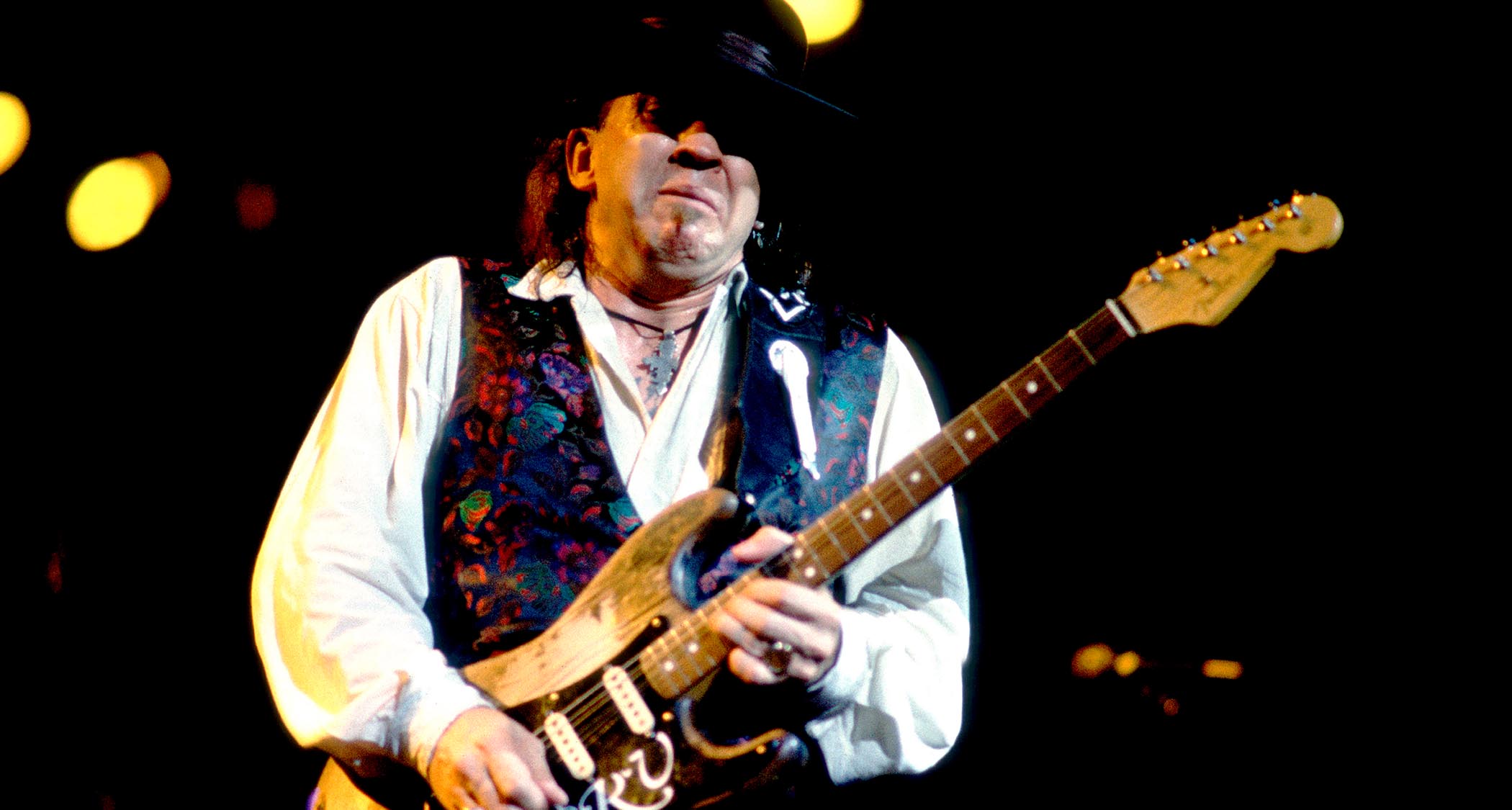
While Hendrix was at the cutting edge of guitar technique in 1968 when the song was recorded, by 1984 and the album Couldn’t Stand The Weather, Stevie had stood on the shoulders of his formative giant and lit a furnace under Jimi’s licks. He was faster, more technically accurate, and it’s clear why a new generation of guitar fans thought he was musical manna from six-string heaven.
All the elements of the Jimi, Noel Redding and Mitch Mitchell jam remain; the chukka-chukka wah intro, the Muddy Waters-influenced blues curl riff, and the freeform jam with its changes of volume and dynamics. What’s missing is the psychedelic mix, with Jimi’s guitars flying left and right across the stereo picture, and his constant change of tones using his Strat’s controls and wah-wah pedal.
Without the original before it, Stevie’s would simply be one of the finest blues workouts ever committed to tape. But brilliant as it is, it’s a tough call to beat what writer John Perry called “interstellar hootchie kootchie”, and Joe Satriani states simply as “the greatest piece of electric guitar work ever recorded.” – Neville Marten
5. Carlos Santana – Black Magic Woman
In a recent interview, Fleetwood Mac’s drummer Mick Fleetwood revealed that only recently did the band’s Stevie Nicks discover Black Magic Woman to be founder Peter Green’s composition, and not a Santana song. But such was the cover’s success in America where it hit #4 on the Billboard Hot 100, that it’s a common misconception.
Fleetwood Mac’s second single, which made a half-hearted UK #37, begins with a haunting three-note D minor chord at the 17th fret of Green’s Les Paul. Drenched in reverb, and sustained due to Peter vibrating the chord with all three fingers, nothing like it had been heard before. Likewise, Green’s 24-bar solo, played on his recently out-of-phase-wired Les Paul, which was simple but perfect.
Based on Otis Rush’s All Your Love, as recorded by John Mayall’s Bluesbreakers with Eric Clapton, Green also takes his song from a lazy lope into a shuffle over which he interjects vocal scats and answering licks.
Santana took the arrangement a whole lot further. The album version (from the chart-topping Abraxas) bolted it together with Gábor Szabó’s Gypsy Queen for an almost prog-style extravaganza.
Santana’s soloing took elements of Green’s playing but added another layer of sophistication. His intro and subsequent solos hinged around the use of D minor’s 2nd/9th interval (E) which, when played over the song’s second chord of A minor, becomes its 5th to create a dark, unsettled vibe.
It sounds like the track was a straight band take, as we clearly hear Carlos riding his volume control between rhythm and lead parts. His unique sound and touch, and the band’s natural Latin swing, with keyboard player Gregg Rolie’s vocal sounding eerily like Green, make it one of the most successful covers of all time and deservedly set Santana on the path to guitar legend status.
Various other versions exist, but an acoustic tribute to Green from ex-Bluesbreaker Eric Clapton in 2021, only months after his death, was particularly poignant. Another moving occasion was when Green guested with Santana to perform the song on its induction into the Rock & Roll Hall of Fame in 1998, when Peter and Carlos traded solos. – Neville Marten
4. Van Halen – You Really Got Me
Van Halen knew how to take someone else’s song and inject it with own sense of panache – just listen to their versions of You’re No Good, Ice Cream Man and (Oh) Pretty Woman and you’ll see what we mean. But it’s their rendition of You Really Got Me by The Kinks that demonstrates this best.
Originally released in 1964, You Really Got Me was written by Ray Davies, although it was his brother Dave who played the riff that is widely acclaimed as the blueprint for heavy metal.
In their version, Van Halen threw in as much charm and energy as humanly possible to truly make it their own. They stuck fairly close to the structure of the original, but with Edward turning up the gain for a fatter sound than the comparatively tinny tones tracked by Ray and Dave Davies, as well as singer David Lee Roth’s typically high-energy vocals, it became readapted as a modern classic for its time, appearing on the band’s revolutionary 1978 debut.
For the recording, the guitarist used his Ibanez Destroyer 2459 – the Japanese company’s take on the Gibson Explorer design – and after a heavy amount of modding in the years that followed, the guitar would eventually become known as ‘The Shark’.
It was plugged into the late-’60s Marshall 1959 Super Lead that was responsible for the tones heard of the first six Van Halen albums, with an MXR Phase 90 providing the swirling modulation heard during the solo section.
While the original’s leads were jangly and more bluesy in feel, the VH cover boasts a much more flamboyant approach to lead guitar, with classical‑sounding tapped ideas where the fretting hand chromatically descends one fret at a time as well as wildly expressive overbends higher up the neck.
The song wraps up with a 7#9 shape, also known as the ‘Hendrix chord’, before the guitarist throws in a final flurry of licks leading to the last stab. – Amit Sharma
3. Jeff Buckley – Hallelujah
The original version of Hallelujah, written and recorded by Leonard Cohen in 1984, was by all accounts a challenge to realise at its full potential. The Canadian folk legend is said to have drafted 150 verses, deliberating over countless versions of each line in order to unravel the version that finally appeared on his seventh album Various Positions.
The song was first covered by John Cale in 1991 before Jeff Buckley recorded his version for his debut album Grace in 1994, the only album released before his tragic death three years later.
Though it was performed in the same key, there are several notable differences – the first being Buckley’s higher range as a vocalist in contrast to Cohen’s baritone; the second being the guitars brought right to the very forefront of the mix and transposed up an octave with a capo at the fifth fret.
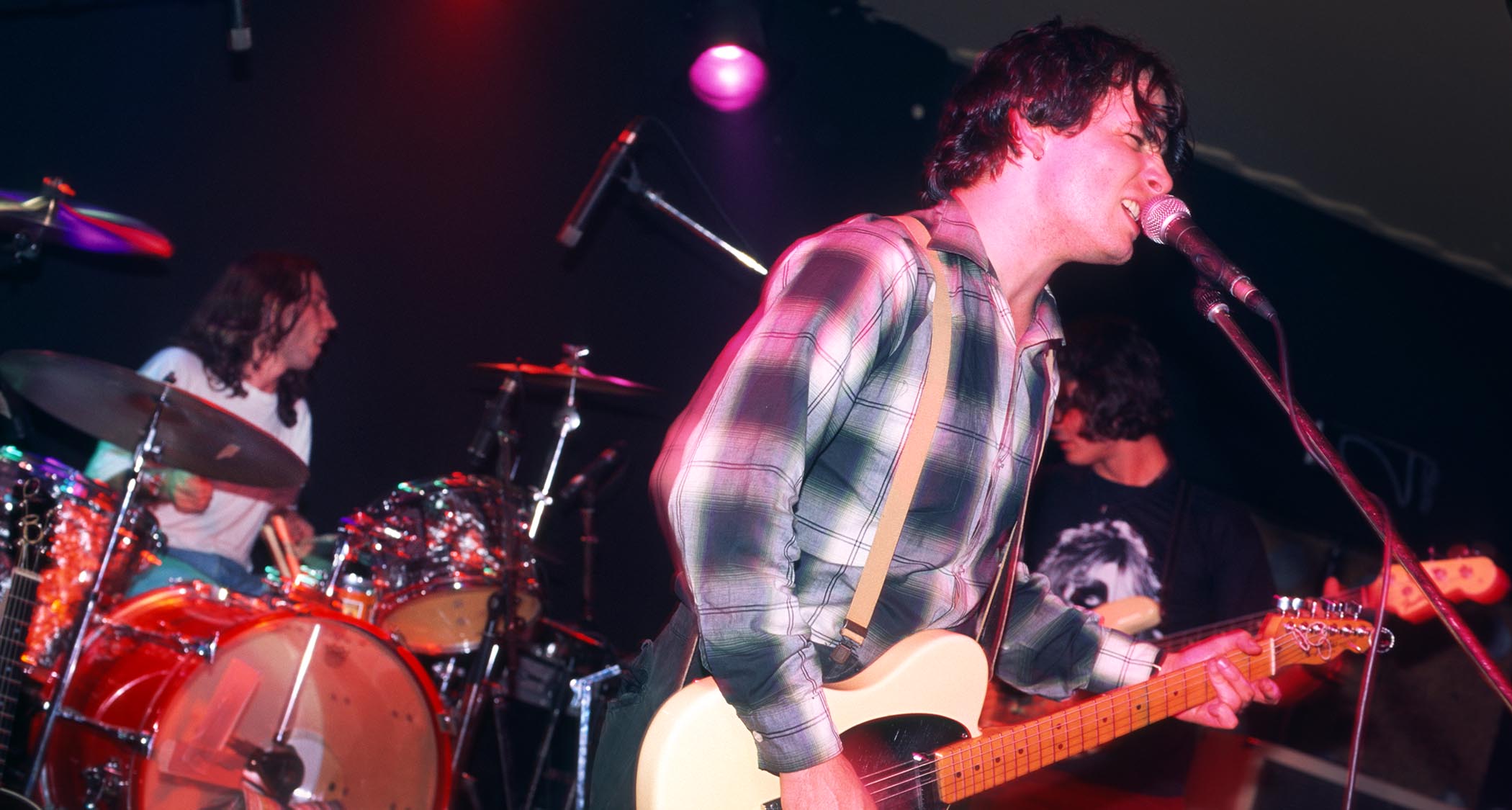
As a result, the cover was less subdued and spoken-word in feel, with more upper frequencies emanating from both the voice and guitar.
There has been some debate as to which guitar was used for the recording, and while many believe it to be Buckley’s main workhorse, a 1983 Top Loader Fender Telecaster – which was eventually bought by Muse frontman Matt Bellamy in 2020 – an assistant engineer who worked on parts of the album has claimed a Gibson semi-hollow was used.
Whatever it was – and it definitely sounds more like the single-coil twang associated with Telecasters than the open warmth of a semi-hollow – the guitar was most likely plugged into a rented Fender Vibroverb with an Alesis Quadraverb rack unit providing the ambience.
Though it might look like a simple succession of rudimentary G, Emin7, C and D chords, Buckley’s delivery in terms of picking is actually quite intricate and will require some attention to detail to replicate authentically. – Amit Sharma
2. Johnny Cash – Hurt
The 1994 Nine Inch Nails track was Trent Reznor’s agonised examination of loneliness and drug abuse. The standout feature of the guitar track is the chilling B5 (add #11) that opens the track, played in drop D tuning (9-9-9-10-x-x). Johnny Cash’s reimagining of the song dispensed with that dissonance, but lost none of the emotional impact, thanks in large part to the obvious frailty of Cash’s voice.
The 2002 music video showed Cash near the end of his life, and following his death in 2003 the video became his memorial, much as The Man Who Sold The World became Kurt Cobain’s. Even Trent Reznor said “That song isn’t mine anymore,” describing his response to the video as “tears, silence, goosebumps”.
Tom Petty sideman Mike Campbell played acoustic guitar on the track alongside sessioneer Smokey Hormel. They played the tune in A minor, down a tone from the original. Where Reznor’s version is cold and stark, Cash’s is rich and warm, yet both convey a strong sense of grief.
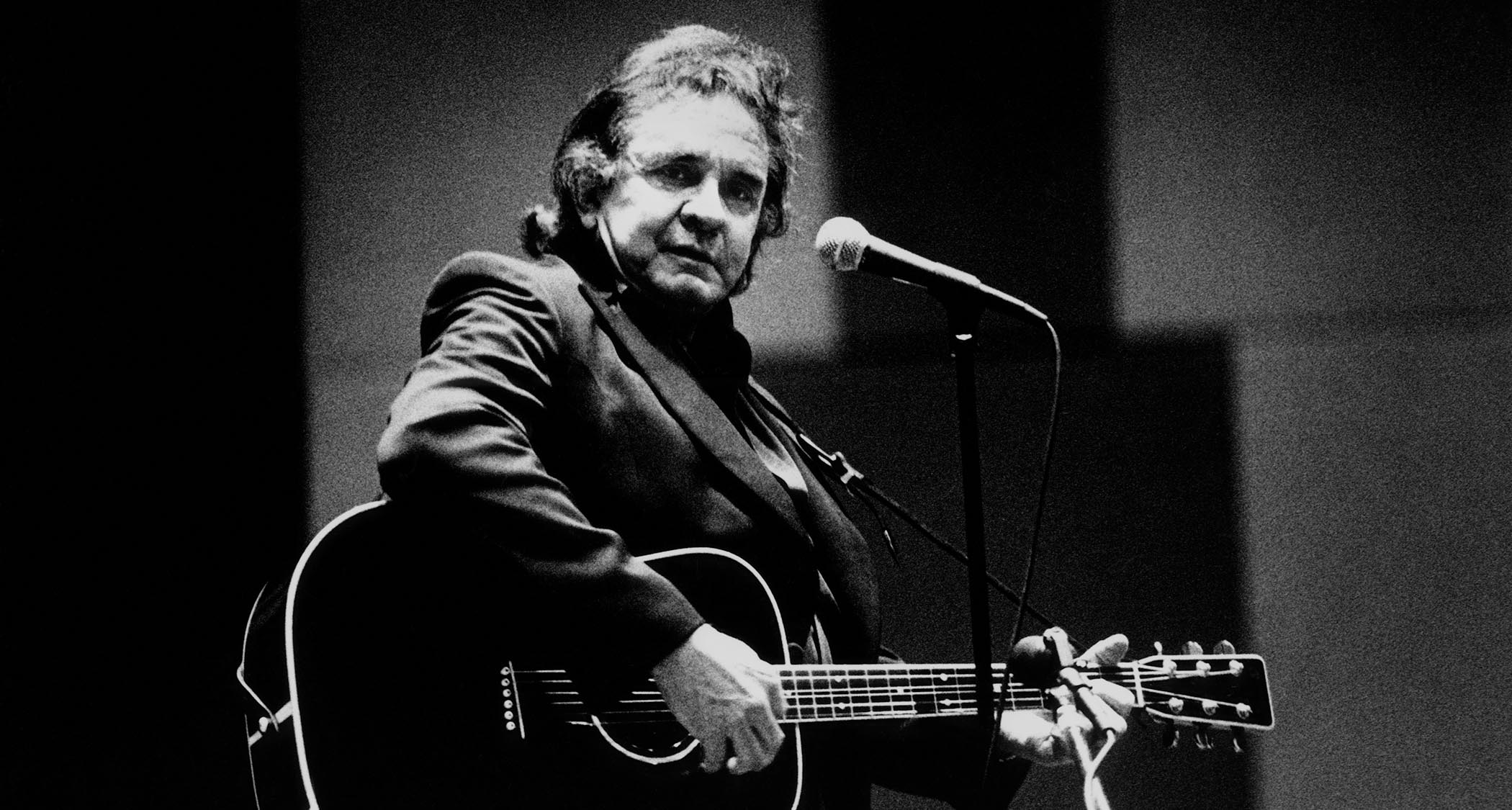
The chorus is propelled by a repeating G note, doubled on piano that persists through the chord changes. The impact of this pedal tone belies its simplicity; without it, much of the chorus’s power would be lost. This pedal tone is undoubtedly inspired by the original, which uses a plinky, percussive tone to do something similar, although it follows more of the chord changes.
Campbell and Hormel have not commented on what acoustics they played on the record, but Campbell has revealed that he bought a 1956 Gibson J-200 while recording with Johnny Cash after the studio engineer told him it was for sale nearby.
When recording, Cash’s failing health meant he could only record in brief sessions, so Hormel recorded the guide vocal while the band laid down the backing track. – Jenna Scaramanga
1. Jimi Hendrix – All Along The Watchtower

In news that will shock precisely no-one, Total Guitar readers have named Hendrix’s All Along The Watchtower the greatest cover version of all time. Bob Dylan’s album John Wesley Harding, which featured the song, was released on December 27, 1967.
Hendrix spotted the track’s potential immediately, and the basic track for his version was recorded less than three weeks later, on January 21. He had always felt a kinship with Dylan, and his father Al Hendrix suggested that Dylan’s limited vocal abilities gave Jimi the confidence to try singing himself.
At that January 21 session, Traffic guitarist Dave Mason played the slightly out-of-tune 12-string that gives the track its depth. He recorded live with Mitch Mitchell on drums and Hendrix on six-string acoustic. What guitar Jimi was playing isn’t documented, but it’s known he arranged the track on his Epiphone FT-79 acoustic, the guitar he owned longer than any other. Mason reportedly took dozens of takes to get the part Jimi wanted.
After 13 takes, Rolling Stones guitarist Brian Jones stumbled into the studio drunk, disastrously attempted to play the piano, and was soon demoted to percussion duties.
At take 27, Hendrix and Mason’s guitar parts finally gelled. “To me, it’s a wonderful moment in the song to hear those two guys locking in,” recalled engineer Eddie Kramer.
Bassist Noel Redding left the session without playing. Some accounts claim he disliked the arrangement, preferring Dylan’s original, while others say Jimi wanted to play bass himself and Redding went to the pub in protest.
Either way, Hendrix recorded the bassline on a Fender Precision, naturally played upside down but strung right-handed, unlike his guitars. Both on bass and guitar, Hendrix drove the groove. In the verses, Mason’s 12-string plays sustained chords, while Hendrix plays rhythmic muted strums and accents.
The rhythm tracks, though, were only the beginning. After they went down at London’s Olympic Studios, Hendrix went on tour in America, adding overdubs to Watchtower at The Record Plant in New York.
The 4-track tapes from Olympic were transferred first to The Record Plant’s 12-track machine, and then the newly invented 16-track. Hendrix recorded and erased countless solo takes over multiple sessions, with engineers including Tony Bongiovi and Phil Brown. Brown recalls Hendrix using a Vox AC30 amp to record. The guitar used is cloaked in mystery.
A photo exists of Hendrix playing his Flying V in the studio with Dave Mason. Hendrix also owned a 1955 Les Paul Custom with Bigsby tremolo and P90 pickups. He used it live during this period, usually for performances of Red House, and it has been claimed but not substantiated that the guitar also appears on All Along The Watchtower.
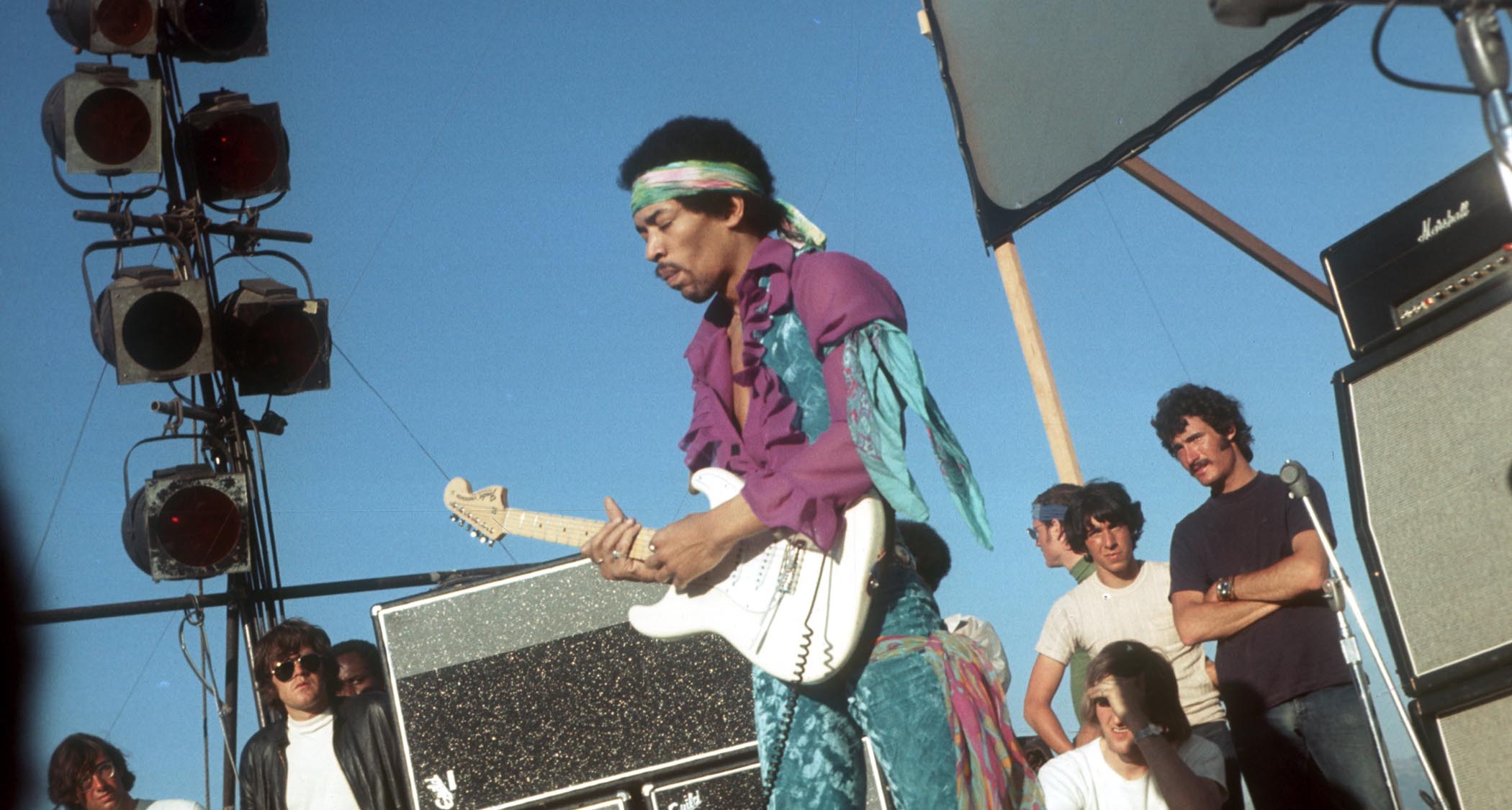
Even without Hendrix’s revolutionary solos, this would be a great cover. Jimi’s genius was seeing the potential to create a heavy groove from Dylan’s chord progression. The space in the riff for the percussion hits prefigures the likes of AC/DC’s Back In Black and Queen’s Hammer to Fall. And the dynamics, which Hendrix took such pains to teach Dave Mason, allow the song to reach peaks and troughs that Dylan’s acoustic rendition comes nowhere near.
Arguably the greatest of all Hendrix’s innovations was his deft ability to combine rhythm and lead guitar, and this is among his finest performances. In the verses, his electric guitar dances around the chords, dropping in responses between vocal lines.
At the end of the third lead break, he falls into a repeated chordal lick that somehow sounds like a riff and a solo at the same time. And then there’s the fact that Hendrix played four solos, all of which are contenders for the greatest solo ever played.
The opening is everything a melodic guitar intro should be: simple, infectious, and setting the scene for what’s to come. The second solo is equally singable while including a climactic blues lick that gets developed later on. The third is a tour of Hendrix’s strengths, opening with his most lyrical string bending.
Then comes the slide portion, allegedly recorded with a Zippo lighter when nothing else provided the right tone. And then there’s the wah section. Hendrix had already used the effect on Burning Of The Midnight Lamp, but this solo showed his mastery of the pedal.
Electric Ladyland was a more ambitious and less commercial album than its predecessors, and All Along The Watchtower gave it a vital hit single. It climbed to #5 in the UK and in the US it became, incredibly, his only Top 40 hit, reaching #20.
Today, it is the definitive example of a cover that eclipses the original version. Famously, Dylan’s live performances of the song were Hendrix-ified, with electric guitars and The Band guitarist Robbie Robertson soloing between each verse. Hendrix, though, was less interested in repeating it, and the song was gone from his setlist a few months after Electric Ladyland was released. – Jenna Scaramanga
Jenna writes for Total Guitar and Guitar World, and is the former classic rock columnist for Guitar Techniques. She studied with Guthrie Govan at BIMM, and has taught guitar for 15 years. She's toured in 10 countries and played on a Top 10 album (in Sweden).
"Upgrading from your entry-level acoustic opens the door to an entirely new world of tonewoods, body shapes, and brands": 6 signs it's time to upgrade from your first acoustic guitar
"I'm past my prime": 5 common excuses for not learning the guitar – and 5 body and mind-boosting reasons you should







![Eric Clapton - I Shot The Sheriff [Crossroads 2010] (Official Live Video) - YouTube](https://img.youtube.com/vi/APWhx97QvxE/maxresdefault.jpg)

























